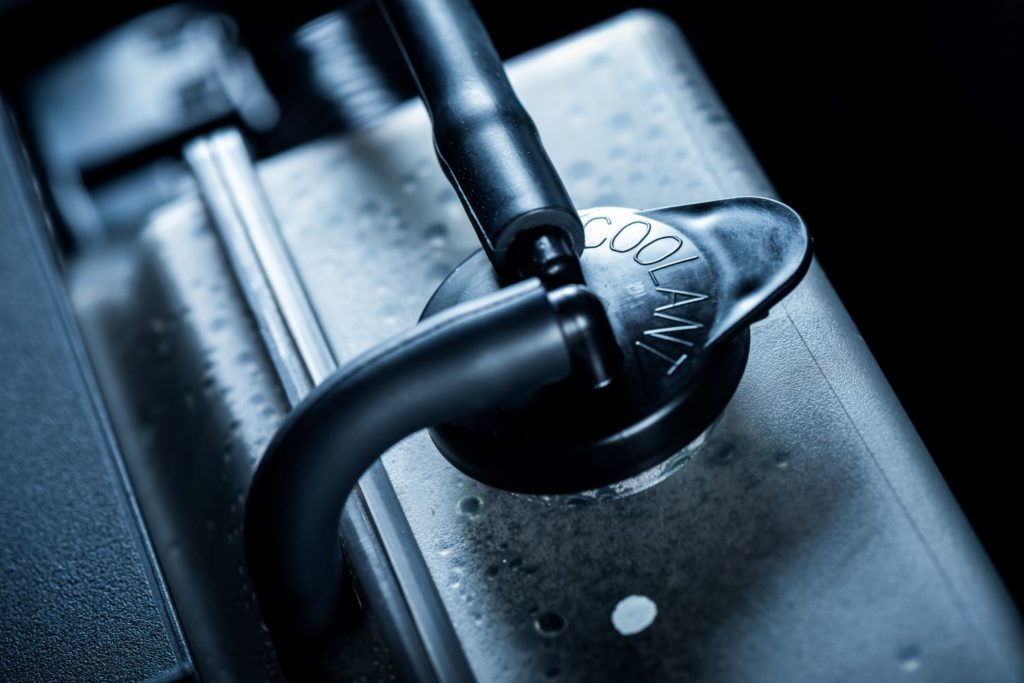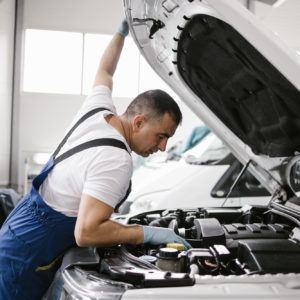Engine oil lubricates and protects the many moving parts in your car’s internal combustion engine. It minimizes friction between metal surfaces and absorbs the heat produced by these components during operation. Lubricating oil works with the cooling system to keep your car cool and running smoothly in all conditions.
Unfortunately, engine oil can get contaminated by substances that seep into the engine, oil sump, or oil reservoir. Water is one of the most common contaminants that can mix with lubricant. When it combines with engine oil, water can cause problems for your car.

What Does Water in Engine Oil Do to Your Car?
Engine oil contains a lot of additives. Dispersants and detergents clean engine parts, friction modifiers keep friction down and cool the components, and antioxidants and inhibitors prevent corrosion and rust.
When water mixes with engine oil, it reduces the effectiveness of these additives, and if enough water enters the cooling system it can make an engine-destroying mess.
In particular, water is a leading cause of corrosion and rust, which increase friction and heat. So, not only does water disrupt the inhibitors that prevent corrosion and rust, but it also creates these problems.

How Does Water End Up Mixing With Engine Oil?
Condensation, coolant leaks, and human error are common causes for water contamination of engine oil. Let’s take a look at each of them.

Condensation / Cold Engine Blowby
Liquid water can enter the engine through the natural process of condensation. Air contains water vapor that will condense into liquid form at particular temperatures. When cool air or combustion gases pass through the engine, they can lower the temperature until condensation forms on the metal surfaces.
But there are more serious causes of water in the crankcase than this and these are very preventable.
Internal combustion engines produce a gallon of water for every gallon of fuel burned. That’s why you see steam at the tailpipe on cold mornings and it’s also why mufflers typically have a very small drain hole (about ⅛ inch) near the bottom to prevent water from collecting in the muffler.
Some of that water in the form of steam bypasses the piston rings as blowby when the engine is cold, but as the engine warms up, a properly flowing PCV (positive crankcase ventilation) system removes the water along with the rest of the crankcase vapors.
Engines that run too cold or only make very short trips or have a clogged PCV system can develop dark sludge that can eventually destroy the engine by settling in the oil pan and clogging the oil pump pickup screen. For that reason, it’s important to make sure you never (or almost never) start your engine unless you intend to completely warm it up.
Engines that run too cold or only make very short trips or have a clogged PCV system can develop dark sludge that can eventually destroy the engine by settling in the oil pan and clogging the oil pump pickup screen.
– Richard McCuistian, ASE Certified Master Automobile Technician
Coolant Leak
Cooling fluid is mostly water, which is always bad news for metal parts. If coolant escapes the cooling system through a leak, chances are high that it will find its way into the engine and mix with oil.
A non-watertight seal can let engine coolant leach into the oil sump. The cylinder gasket head is prone to doing this, although other seals can also have this issue.

More seriously, a watertight part can develop a critical problem that compromises its integrity. If a gasket fails or a fracture forms on an engine part, coolant can make its way through the ensuing leak and contaminate the engine oil supply.
Human Error
Sometimes, while filling up the oil reservoir, you might accidentally put water instead of engine oil. On the upside, you’ll immediately know how the water got there in the first place.

Water in Engine Oil Symptoms
When water mixes with engine oil, it will cause problems like reduced engine power and oil sludges. The contaminated oil can turn milky brown in color, and bubbles can form on the dipstick when you pull the measuring tool out.
If you come across solid proof that water has mixed with your car’s engine oil, it’s crucial to take your ride to a trusted mechanic as soon as possible. They’ll need to inspect every engine part to find the cause of the contamination.
Any information provided on this Website is for informational purposes only and is not intended to replace consultation with a professional mechanic. The accuracy and timeliness of the information may change from the time of publication.
































